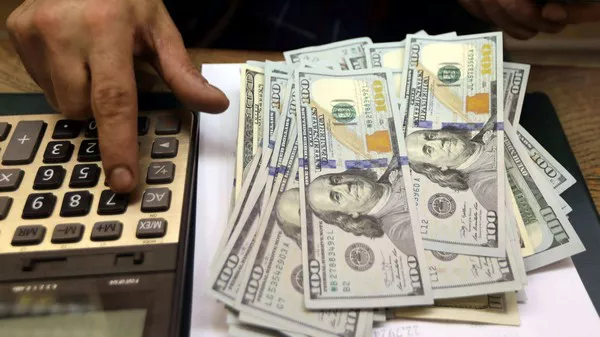In today’s fast-paced global economy, staying informed about currency exchange rates is crucial for businesses and investors alike. One of the most prominent currency pairs in the world is USDMXN, which represents the exchange rate between the United States Dollar (USD) and the Mexican Peso (MXN). In this comprehensive guide, we will delve into the nuances of USDMXN, its impact on both the US and Mexican economies, factors influencing its fluctuations, and practical insights for traders and investors.
1. The Basics of USDMXN Exchange Rate
The USDMXN exchange rate is a vital metric in the world of foreign exchange (forex) trading. It represents the relative value of one US Dollar in terms of Mexican Pesos. For instance, if the USDMXN rate is 20.00, it means one USD is equivalent to 20.00 MXN. Understanding this rate is essential for international trade, tourism, and investment between the two nations.
2. Factors Influencing USDMXN Fluctuations
The exchange rate of USDMXN is subject to a myriad of factors, both internal and external. Here are some key determinants:
Economic Data:
Macroeconomic indicators such as GDP growth, employment rates, and inflation in both the US and Mexico have a direct impact on the exchange rate. Stronger economic performance tends to strengthen the USD and weaken the MXN, and vice versa.
Interest Rates:
Central banks, such as the Federal Reserve in the US and the Bank of Mexico, play a significant role. When the US raises interest rates, it attracts foreign capital, leading to an appreciation of the USD against the MXN.
Political Stability:
Political events and policies can create uncertainty in the forex market. Elections, trade agreements, and diplomatic relations can all influence the USDMXN rate.
Global Factors:
Events like global economic crises or changes in commodity prices (especially oil, given Mexico’s reliance on oil exports) can have a ripple effect on USDMXN.
Speculation:
Traders and investors often engage in speculation, buying or selling currencies based on future expectations, which can lead to short-term fluctuations.
3. USDMXN and the US Economy
The USDMXN exchange rate has profound implications for the US economy. Here are some key points to consider:
Trade Balance:
A weaker USDMXN rate can boost US exports to Mexico, as US products become more affordable for Mexican consumers. This can help improve the US trade balance.
Inflation:
A stronger USD, resulting in a weaker USDMXN rate, can help keep inflation in check by reducing the cost of imported goods for US consumers.
Investment:
A stable and predictable USDMXN rate is crucial for foreign investors looking to invest in the Mexican market, as it minimizes currency risk.
4. USDMXN and the Mexican Economy
On the flip side, the USDMXN rate also has significant implications for the Mexican economy:
Inflation:
A weaker peso can lead to higher inflation in Mexico, as imported goods become more expensive. This can affect the purchasing power of Mexican consumers.
Exports:
A stronger USD can make Mexican exports more competitive, potentially boosting the country’s export-driven industries.
Debt:
Mexico’s government and businesses often borrow in US dollars. A weaker peso can increase the cost of servicing USD-denominated debt.
Tourism:
A favorable USDMXN rate can attract more American tourists to Mexico, benefiting the tourism industry.
5. Strategies for Trading USDMXN
For traders and investors looking to capitalize on USDMXN fluctuations, here are some strategies to consider:
Technical Analysis:
Utilize charts and technical indicators to identify entry and exit points based on historical price patterns.
Fundamental Analysis:
Stay informed about economic data releases, central bank decisions, and political events in both countries.
Risk Management:
Set stop-loss orders and manage your position size to limit potential losses.
Diversification:
Consider including USDMXN in a diversified forex portfolio to spread risk.
6. Conclusion: Navigating the USDMXN Landscape
In conclusion, understanding the USDMXN exchange rate is essential for anyone involved in international trade, investment, or forex trading.
Its fluctuations are influenced by a complex interplay of economic, political, and global factors, making it a dynamic and intriguing currency pair to follow. By staying informed and employing sound trading strategies, individuals and businesses can navigate the USDMXN landscape with confidence and seize opportunities in the ever-evolving world of foreign exchange.
As the global economy continues to evolve, keeping an eye on USDMXN will remain a critical aspect of financial decision-making.
Stay tuned for the latest updates and analysis to stay ahead in the forex market.
Related Topics:
The Role of the USD as a Major Reserve Currency
Factors behind USD’s Status as the Most Traded Currency
Why USD is the Most Traded Currency in the World?

























